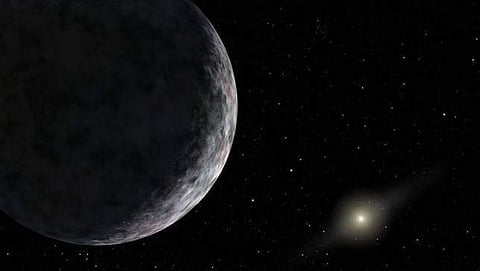

Researchers have identified two dozen planets outside our solar system that may have conditions more suitable for life than our own and some of these orbit stars that may be better than even our Sun.
A study, led by Washington State University scientist Dirk Schulze-Makuch and published in the journal Astrobiology, detailed characteristics of potential "super habitable" planets, that include those that are older, a little larger, slightly warmer and possibly wetter than Earth.
Life could also more easily thrive on planets that circle more slowly changing stars with longer lifespans than our sun.
The 24 top contenders for super habitable planets are all more than 100 light-years away.
However, Schulze-Makuch said the research could help focus future observation efforts, such as from NASA's James Web Space Telescope, the LUVIOR space observatory and the European Space Agency's PLATO space telescope.
"With the next space telescopes coming up, we will get more information, so it is important to select some targets," said Schulze-Makuch, a professor with WSU and the Technical University in Berlin.
"We have to focus on certain planets that have the most promising conditions for complex life. However, we have to be careful to not get stuck looking for a second Earth because there could be planets that might be more suitable for life than ours".
There are at least 4,500 known exoplanets beyond our solar system.
Habitability, however, does not mean these planets definitely have life, merely the conditions that would be conducive to life.
Earth is around 4.5 billion years old but the researchers argued that the sweet spot for life is a planet that is between 5 billion to 8 billion years old.
Size and mass also matter. A planet that is 10 per cent larger than the Earth should have more habitable land.
"One that is about 1.5 times Earth's mass would be expected to retain its interior heating through radioactive decay longer and would also have a stronger gravity to retain an atmosphere over a longer time period," the researchers noted. Water is key to life and the authors argue that a little more of it would help, especially in the form of moisture, clouds and humidity. A slightly overall warmer temperature, a mean surface temperature of about 5 degrees Celsius (or about 8 degrees Fahrenheit) greater than Earth, together with the additional moisture, would be also better for life.
Among the 24 top planet candidates, none of them meets all the criteria for super habitable planets, but one has four of the critical characteristics, making it possibly much more comfortable for life than our home planet.
"We have a great number of complex and diverse lifeforms and many that can survive in extreme environments. It is good to have an adaptable life, but that doesn't mean that we have the best of everything," the authors wrote.
